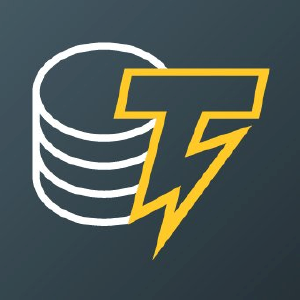Stablecoin Settlement: Revolutionary Advance for Digital Finance
7 min read
BitcoinWorld Stablecoin Settlement: Revolutionary Advance for Digital Finance In the rapidly evolving landscape of digital finance, the efficiency of transactions is paramount. Stablecoins, designed to bridge the volatility of cryptocurrencies with the stability of fiat money, hold immense promise. Yet, their full potential hinges on robust, seamless infrastructure for their movement. Imagine a world where digital payments are not just fast, but truly instantaneous, transparent, and secure for everyone involved. This vision is now closer to reality, thanks to a groundbreaking collaboration in South Korea that aims to revolutionize stablecoin settlement . Why is Efficient Stablecoin Settlement Crucial for the Future of Finance? Traditional financial systems, while robust, often grapple with inefficiencies. Cross-border payments can take days, reconciliation processes are manual and error-prone, and transaction fees can eat into profits. These hurdles hinder the seamless flow of capital and innovation. Stablecoins offer a compelling alternative, providing the speed and global reach of blockchain technology while maintaining price stability, which is essential for everyday commerce. However, the mere existence of stablecoins isn’t enough. For them to truly integrate into the global economy, a sophisticated underlying ‘plumbing’ system is required. This is where efficient stablecoin settlement becomes the cornerstone. It’s about more than just moving digital tokens; it’s about automating the entire lifecycle of a transaction, from initial balance checks to final settlement, across diverse parties. Enter Project Namsan. This ambitious initiative, spearheaded by South Korean IT giant NHN and blockchain security firm SOOHO.IO, aims to build precisely this kind of advanced infrastructure. Their goal is to establish a stablecoin settlement system that automates real-time balance checks and streamlines settlement processing among a wide array of participants, including merchants, stablecoin issuers, and traditional financial institutions. This automation promises to drastically reduce friction, enhance transparency, and accelerate the pace of digital commerce. A pilot trial for this innovative system is even anticipated to commence as early as September, marking a significant step forward. Unpacking Project Namsan: The Core of Stablecoin Settlement Innovation The strength of Project Namsan lies in the synergistic partnership between NHN and SOOHO.IO. Each entity brings unique, complementary expertise to the consortium, creating a powerful alliance poised to tackle the complexities of digital asset infrastructure. NHN: As a leading South Korean IT company, NHN boasts extensive experience in developing and managing large-scale online services, including payment systems, cloud infrastructure, and gaming platforms. Their vast user base and technological prowess provide the foundational IT backbone and operational scale necessary for a nationwide stablecoin settlement network. SOOHO.IO: This blockchain firm specializes in smart contract security auditing and decentralized application development. Their deep understanding of blockchain technology, cryptographic security, and distributed ledger systems is critical for building a secure, transparent, and resilient settlement layer. SOOHO.IO’s expertise ensures that the infrastructure is not only efficient but also robust against potential vulnerabilities. The consortium model allows for a collaborative approach, combining the best of traditional IT infrastructure with cutting-edge blockchain innovation. This fusion is essential for creating a system that can handle high transaction volumes while adhering to stringent security and compliance standards. The vision for Project Namsan’s stablecoin settlement system involves a seamless flow of information and value, ensuring that funds are settled almost instantaneously, reducing counterparty risk and operational overhead for all participants. Who Benefits from Advanced Stablecoin Settlement Infrastructure? The development of a robust stablecoin settlement infrastructure like Project Namsan stands to benefit a diverse range of stakeholders, fostering a more efficient and inclusive financial ecosystem. Let’s explore some key beneficiaries: Stakeholder Key Benefits from Stablecoin Settlement Merchants & Businesses Experience instant payment finality, significantly reduced transaction fees compared to traditional card networks, and minimized chargeback risks. This improves cash flow and operational efficiency. Stablecoin Issuers Gain streamlined, real-time management of reserves and issuance, enhanced compliance tools, and greater transparency in their operations, strengthening trust in their stablecoins. Financial Institutions Unlock new revenue streams by participating in the digital asset economy, reduce back-office operational costs through automation, and enhance interoperability with emerging financial technologies. Consumers & Users Enjoy seamless, low-cost transactions, greater financial choice, and the stability of digital currencies for everyday purchases and transfers, enhancing their digital financial experience. Regulators & Governments Benefit from enhanced oversight capabilities, better data for monetary policy decisions, and a more transparent financial system that can help combat illicit activities. What Challenges Lie Ahead for Widespread Stablecoin Settlement Adoption? While the promise of advanced stablecoin settlement is immense, its widespread adoption is not without hurdles. Building a robust digital financial infrastructure requires navigating complex technical, regulatory, and societal challenges. Regulatory Clarity and Harmonization: The legal and regulatory frameworks surrounding stablecoins are still evolving globally. For Project Namsan to achieve broad success, clear guidelines from South Korean authorities, and ideally, a degree of international regulatory alignment, will be essential. This includes aspects like consumer protection, anti-money laundering (AML), and know-your-customer (KYC) requirements. Interoperability with Existing Systems: Integrating a new, blockchain-based stablecoin settlement system with legacy financial infrastructure (banks, payment processors, accounting systems) is a significant technical challenge. Seamless data exchange and transaction flow between disparate systems are critical for real-world utility. Scalability and Performance: For a system to handle the transaction volumes of a national or even international economy, it must be highly scalable. Ensuring the underlying blockchain and IT infrastructure can process millions of transactions per second reliably and efficiently is paramount. User Adoption and Education: Despite the benefits, widespread adoption depends on user familiarity and trust. Educating merchants, financial institutions, and the general public about how to use and benefit from stablecoin-based payments will be an ongoing effort. Security and Risk Management: While SOOHO.IO brings strong security expertise, the digital asset space is constantly targeted by malicious actors. Continuous vigilance, robust security protocols, and effective risk management frameworks are necessary to protect assets and data within the stablecoin settlement system. The Global Landscape of Stablecoin Settlement : South Korea’s Position The pursuit of efficient digital payments is a global phenomenon. Many countries are exploring Central Bank Digital Currencies (CBDCs), which are digital forms of fiat currency issued and backed by central banks. Project Namsan, however, represents a private sector-led initiative focusing on commercial stablecoins. This distinction is important: Feature Private Stablecoin Settlement (e.g., Project Namsan) Central Bank Digital Currency (CBDC) Issuer Private entities (banks, tech companies) Central Bank Underlying Asset Fiat currency reserves (e.g., KRW, USD) Central bank liabilities (digital fiat) Innovation Driver Market demand, competitive innovation Public policy goals (financial inclusion, payment efficiency) Focus Efficient commercial transactions, DeFi integration Monetary stability, sovereign control, financial plumbing South Korea, known for its rapid technological adoption and digital infrastructure, is well-positioned to be a leader in this space. The country has a tech-savvy population, a vibrant blockchain ecosystem, and a regulatory environment that, while cautious, is open to innovation. Project Namsan could serve as a blueprint for how private sector innovation can drive significant advancements in stablecoin settlement , potentially influencing global standards for digital payment systems and cross-border transactions. Actionable Insights for the Digital Economy For Businesses: Begin exploring how stablecoin payments could integrate into your existing systems. The reduction in transaction costs and speed of settlement could offer a competitive edge. Keep an eye on the Project Namsan pilot for insights into real-world applications. For Financial Institutions: Engage with blockchain technology and stablecoin initiatives. Partnerships with tech firms like NHN and SOOHO.IO can provide valuable experience and position you for future digital finance opportunities. For Individuals: Stay informed about stablecoins and their increasing utility. Understanding these digital assets can empower you to make more efficient financial decisions in a rapidly digitizing world. The consortium formed by NHN and SOOHO.IO to build a robust stablecoin settlement infrastructure with Project Namsan is more than just a technological endeavor; it’s a foundational step towards a more efficient, transparent, and interconnected global financial system. By automating real-time balance checks and settlement processing, they are addressing core inefficiencies that have long plagued traditional finance. As the pilot trial approaches in September, the world will be watching to see how this ambitious project unfolds, potentially setting a new standard for how value moves in the digital age. This initiative underscores South Korea’s commitment to leading the charge in financial innovation, promising a future where digital transactions are not just convenient, but truly transformative. Frequently Asked Questions (FAQs) Q1: What is Project Namsan? A1: Project Namsan is a consortium initiative led by South Korean IT company NHN and blockchain firm SOOHO.IO. Its primary goal is to establish a stablecoin settlement infrastructure that automates real-time balance checks and settlement processing among merchants, stablecoin issuers, and financial institutions. Q2: Who are NHN and SOOHO.IO, and what are their roles? A2: NHN is a major South Korean IT company providing various online services and infrastructure. They bring their extensive IT experience and operational scale. SOOHO.IO is a blockchain security firm specializing in smart contract auditing and decentralized applications, contributing their expertise in blockchain technology and security to the project. Q3: How will this stablecoin settlement infrastructure benefit merchants? A3: Merchants will benefit from instant payment finality, significantly reduced transaction fees compared to traditional payment methods, and a decrease in chargeback risks, leading to improved cash flow and operational efficiency. Q4: What are the main challenges for the widespread adoption of this infrastructure? A4: Key challenges include navigating evolving regulatory frameworks, ensuring seamless interoperability with existing financial systems, achieving high scalability to handle large transaction volumes, fostering widespread user adoption through education, and maintaining robust security against cyber threats. Q5: When is the pilot trial for Project Namsan expected to begin? A5: According to reports, a pilot trial for Project Namsan’s stablecoin settlement infrastructure could begin as early as September. Q6: Is Project Namsan related to a Central Bank Digital Currency (CBDC)? A6: No, Project Namsan focuses on private stablecoin settlement. While both aim for payment efficiency, CBDCs are digital forms of fiat currency issued and backed by a central bank, whereas private stablecoins are issued by private entities and typically backed by fiat currency reserves. Did you find this article insightful? Share your thoughts on the future of stablecoin settlement and digital finance! To learn more about the latest stablecoin settlement trends, explore our article on key developments shaping stablecoin settlement institutional adoption. This post Stablecoin Settlement: Revolutionary Advance for Digital Finance first appeared on BitcoinWorld and is written by Editorial Team

Source: Bitcoin World



